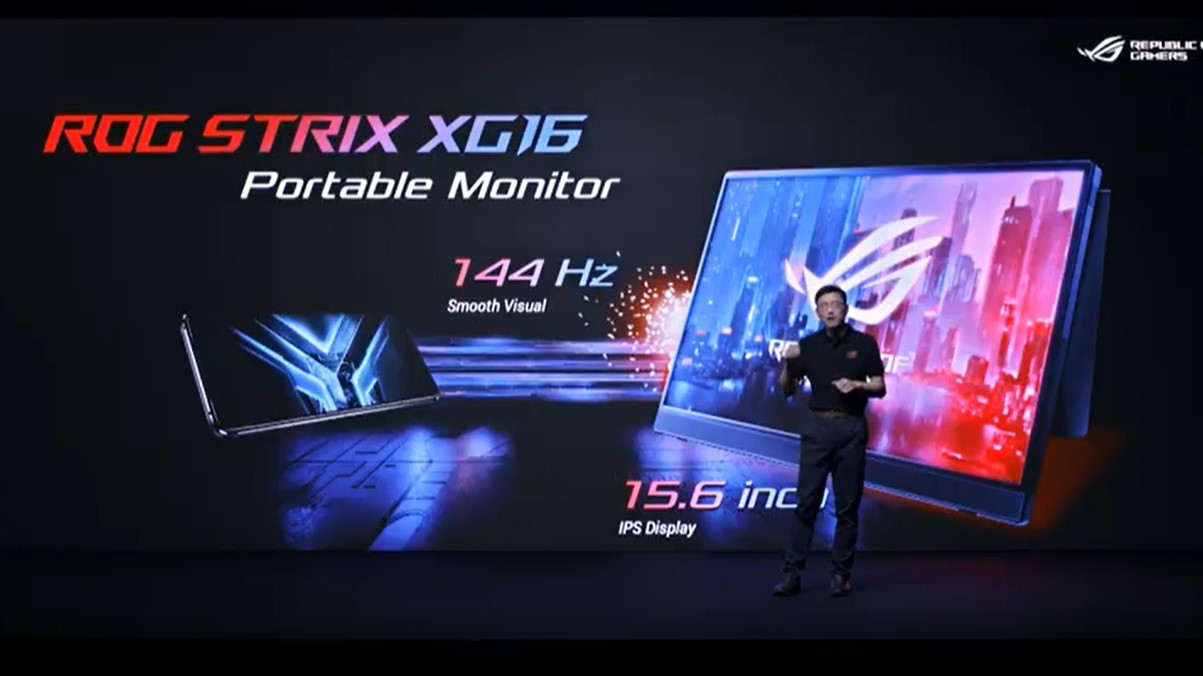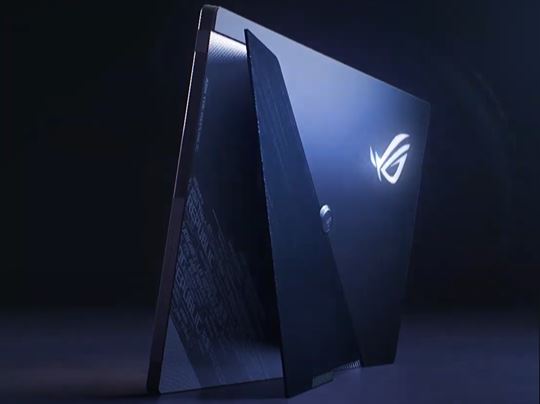Asus’ ROG Strix XG16 Is a 144Hz Portable Monitor With a Stand You Could Actually Stand
Flip-out kickstand looks promising

Asus today unveiled a new display specced for both portability and high-end gaming. The Asus ROG Strix XG16 is landing this December with a gaming-ready refresh rate of 144 Hz.
A 144 Hz refresh rate can be found on some of the best gaming monitors on the market, including larger ones made for the desktop. The ROG Strix XG16 achieves this over a single USB-C connection, making setup easy. There's also a MicroHDMI to HDMI port, which is handy for connecting to additional devices, like a Raspberry Pi.
Asus opted for an IPS panel, which should deliver when it comes to colors and side angle views, which are increasingly important if you're using this as a second screen.
But back to that high refresh rate. The vast majority of portable monitors don’t go past 60 Hz. That’s because the market’s typically focused on boosting screen real estate for productivity.
However, the 15.6-inch Asus ROG XG16 is for gamers who can’t sacrifice refresh cycles, even if they’re traveling or gaming outside of their ideal setup. If you have a laptop that can hit 144 frames per second but is stuck with a 60 Hz or a ‘mere’ 120 Hz screen, tethering an ROG Strix XG16 to the system when gaming could be an upgrade, especially for those moving from 60 Hz. Although, the trickling in of 300 Hz displays in some of the best gaming laptops, such as the Razer Blade Pro 17 and Asus ROG Strix Scar 17 G732, is very slowly starting to munch at this issue (for those who can afford such a machine).
But for the vast majority of whom 144 Hz is ample for serious gaming, the XG16 brings it in a package that you could take on the road. This is a true rarity. There are some on lesser known brands claiming 144 Hz on Amazon, for example. But options from established enthusiast brands the are limited. MSI started promising a 240 Hz portable monitor in January, but so far has only delivered the 60 Hz MSI Optix MAG161V. Then, there’s the Asus ROG Strix XG17AHPE.
That 240 Hz portable displayed delivered on speed, as well as viewing angles and usability in our Asus ROG Strix XG17AHPE review. However, for $500 it’s pricier than a high-end 240 Hz desktop monitor of a larger size. Plus, despite its high price, the XG17AHPE's relies on its flimsy cover to also serve as an origami-style stand. You could get it with a more sturdy tripod stand, but that increases the price even more.
Get Tom's Hardware's best news and in-depth reviews, straight to your inbox.
A Stand to Stand by?

Exciting for anyone who's had to rely on an origami stand before, the the ROG Strix XG16 promises a more user-friendly kickstand. Unlike the ROG Strix XG17AHPE, the ROG Strix XG16 has a piece that flips out from the backside, which serves as a stand. This should prove more solid and sturdy then the thin sleeve XG17AHPE gamers have to fold up. Asus' presentation today claimed it'd also offer angle adjustments. And for attention to detail, you'll "cyber text" inscriptions on the monitor's underside once you pop its kickstand out.
The new monitor will also be available with an adjustable tripod stand; however, Asus didn't clarify if this would cost extra, like it does with the XG17AHPE.
If Asus can deliver the reliable gaming performance that it already proved it can offer with the XG17AHPE while including a stand that doesn’t make people nervous about their new investment, the ROG Strix XG16 may end up in the desks, backpacks and on the journeys of those who need an easy, premium gaming display.

Scharon Harding has over a decade of experience reporting on technology with a special affinity for gaming peripherals (especially monitors), laptops, and virtual reality. Previously, she covered business technology, including hardware, software, cyber security, cloud, and other IT happenings, at Channelnomics, with bylines at CRN UK.
-
gg83 Would this be for markets where cellphones are the only option for gaming? I wouldn't buy a laptop just to attach a new monitor to.Reply